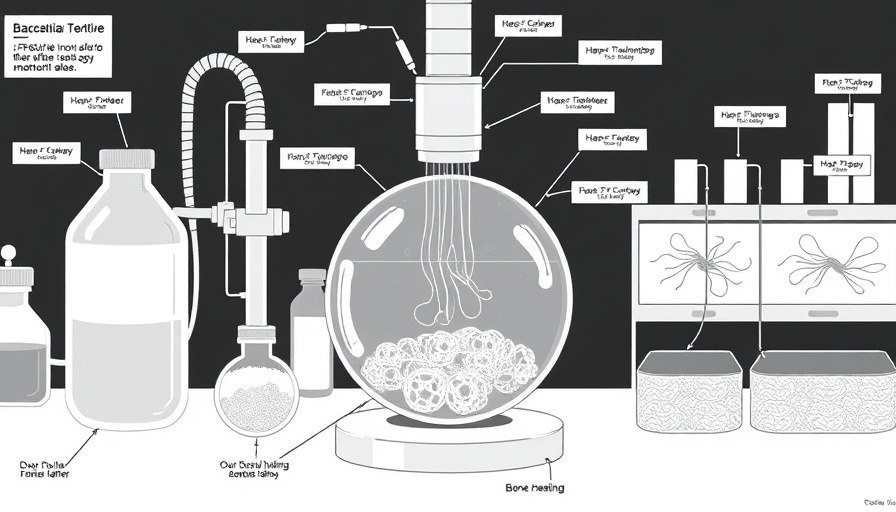
Unlocking the Power of Bacteria in Bone Healing
Have you ever considered how innovative materials can revolutionize bone repair? Recent research from the University of Borås in Sweden has highlighted a breakthrough using bacteria to create fibers capable of healing bones. Sabrina Kopf, a Ph.D. candidate specializing in Polymer Technology, is at the forefront of this exciting development that could change how we approach bone injuries.
What Are PHA Fibers?
At the heart of this research are polyhydroxyalkanoates (PHAs), a unique type of bioplastic produced by bacteria. These fibers can serve as a scaffold for bone cells, providing the necessary environment for healing, especially in large bone defects. "Bone cells need a surface to attach to, and they recognize calcium phosphate as a vital component," Kopf explains. By integrating this substance into the PHA fibers, the research aims to create a material that promotes healing.
A New Approach to Bone Transplants
Traditionally, when a bone is damaged, surgeons often have to take bone from another part of the patient's body for a transplant, which can be both painful and limit healing potential. This new method using synthetic materials like PHA fibers presents a solution that eliminates the need for donor sites and reduces the risk of complications. According to Kopf, these fibers are not only strong but also environmentally friendly, designed to degrade naturally without leaving harmful microplastics behind. This characteristic aligns well with the growing trend towards sustainable practices in medicine.
How the Technology Works
Creating these fibers involved a unique processing technique. By melting the PHA and extruding it through a mold, similar to making pasta, the team produced fibers that were tested on bone cells. Impressively, the fibers showcased strength comparable to bone itself, and bone cells thrived on their surface, suggesting a perfect match for healing.
The Future of Biotech in Medicine
The implications of this research are vast. The ability to create a biologically compatible and eco-friendly material for bone repair could shift paradigms in orthopedic surgery. Hospitals could potentially reduce their reliance on donor bone and improve patient outcomes by using these innovative fibers instead. The future of biotech in medicine continues to expand, merging ideas from biology with cutting-edge technology.
Your Role in This Amazing Advancement
It's fascinating to think about how advances in biotechnology can lead to significant improvements in health care. As consumers, being informed about these changes is crucial, especially when considering health-related choices. Encourage your community to stay updated on such innovations and advocate for sustainable practices in health care.
Staying aware of ongoing research in fields like these can empower individuals and communities to support emerging solutions that prioritize health and environmental sustainability. By being informed, you can help promote a future where healing not only involves strong medical procedures but also a commitment to our planet.
 Add Row
Add Row  Add
Add 




Write A Comment